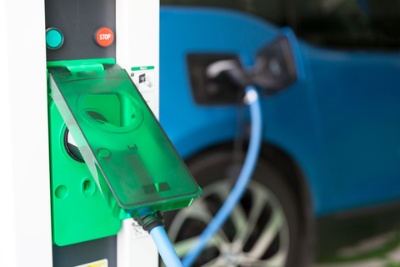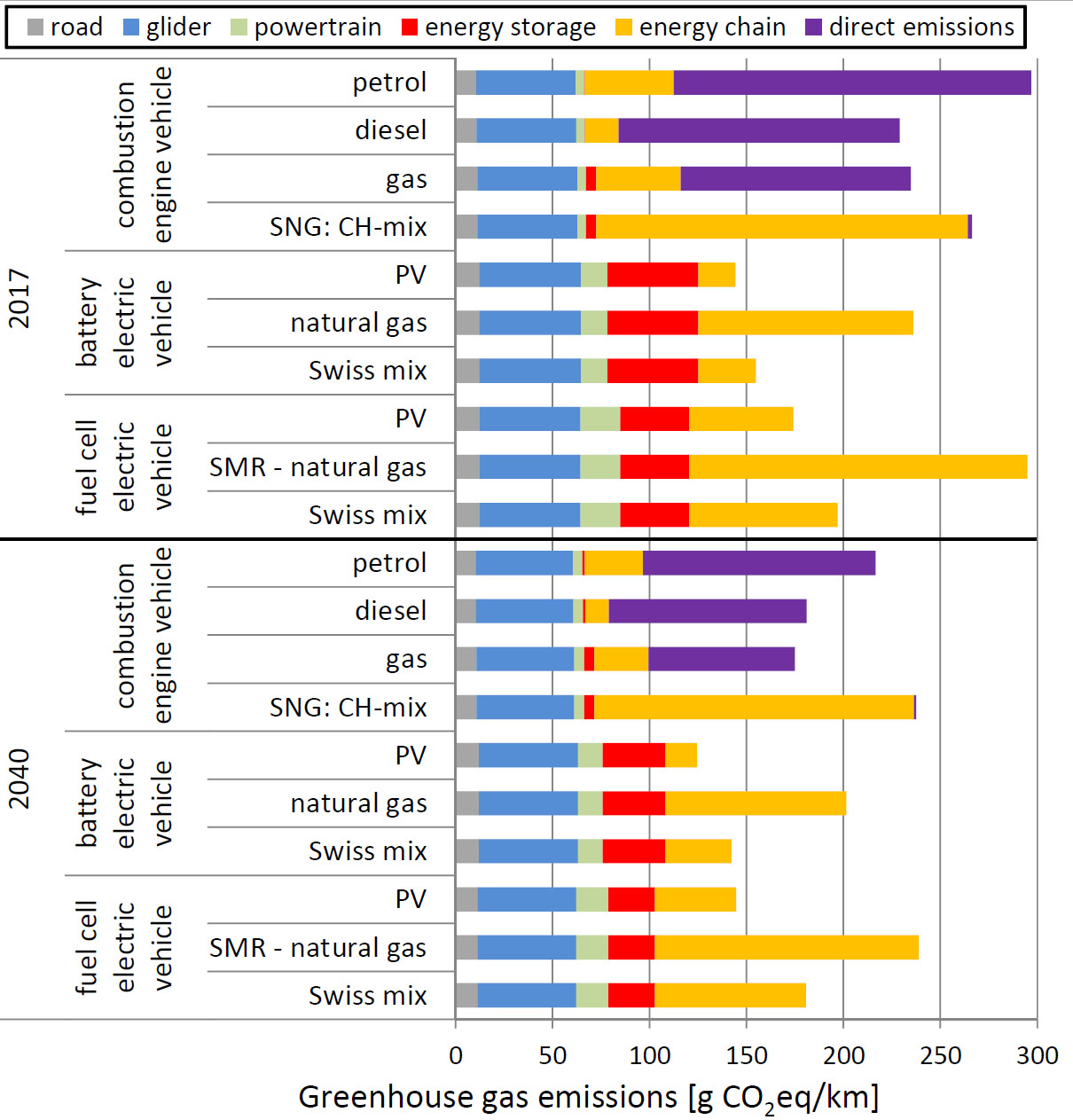SwissEnergy fact sheet on passenger car technologies
- 9/17/18 6:14 PM
- Kirsten Oswald
Environmental burdens of current and future passenger cars – the life cycle perspective

One obvious advantage of new passenger car technologies that are powered by batteries or fuel cells is that there are no local emissions. This is especially beneficial in urban environments where traffic and congestion can have severe impacts on local air quality. However, are these new technologies really zero-emission when also considering vehicle manufacturing and disposal as well as the fuel production and infrastructure chains? SwissEnergy recently published a fact sheet and background report that analyzes this question on the basis of a life cycle assessment of current and future passenger car technologies.
The results of the study show that battery electric vehicles (BEV) have the highest overall energy efficiency and that they have virtually zero operational emissions. Regarding their impacts on climate change, their life cycle greenhouse gas (GHG) emissions depend heavily on the carbon footprint of the electricity that charges their batteries (see figure below). This is also the case for fuel cell electric vehicles (FCEV), as the production of hydrogen also requires electricity. When electricity or hydrogen is derived from sources that are low in CO2 emissions, BEVs and FCEVs have substantially lower life cycle GHG emissions compared to conventional cars (running on gasoline, diesel or gas).

Therefore, the increasingly widespread use of these new technologies, especially electric vehicles, is only beneficial for the climate, if it goes hand in hand with a capacity expansion of low-carbon electricity generation. It is also important to keep in mind that the entire production chain of a BEV or FCEV is more resource intense and complex than of an internal combustion engine vehicle (ICEV). This means that intitally life cycle GHG emissions of BEVs and FCEVs are higher and may be compensiated by lower operational emissions (after about 50’000 km), but only if the invested electricity has a low carbon footprint. Zero tailpipe emissions, but more complex production chains are also associated with a shift of pollutant emissions from urban areas to the regions, where vehicles and components are produced. Though life cycle pollutant emissions of BEV and FCEV are not necessarily lower than those of ICEV, this shift can result in reduced health impacts due to pollutant emissions, since less people might be affected.
For more details and complete background information, refer to the fact sheet or the full report. Both documents can also be downloaded in other languages from the SwissEnergy website.
The study was part of the dissertation of Brian Cox, completed in the Laboratory for Energy Systems Analysis at PSI, where he is a postdoc now. The work was carried out within the framework of Capacity Area B2. For further information, please contact Brian Cox.
!!! This document is stored in the ETH Web archive and is no longer maintained !!!